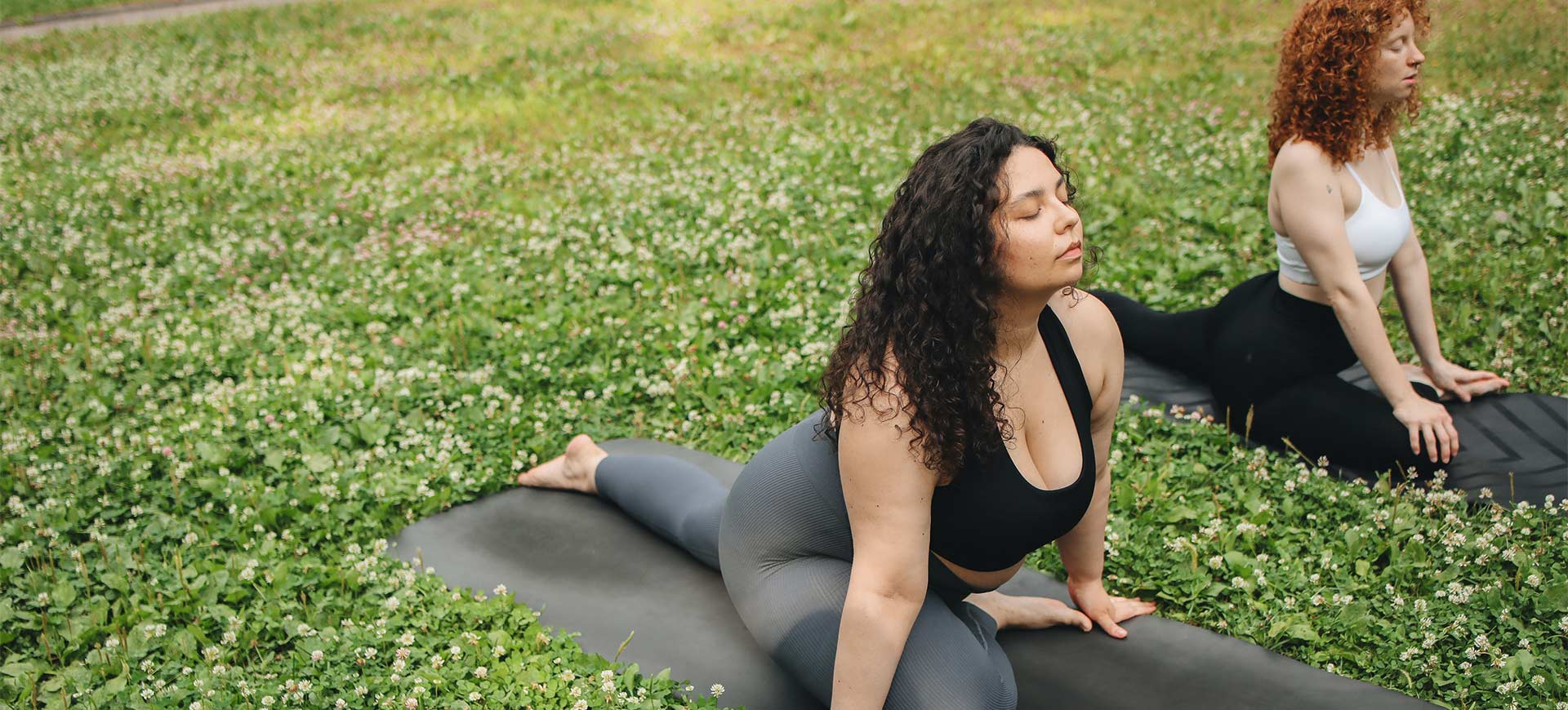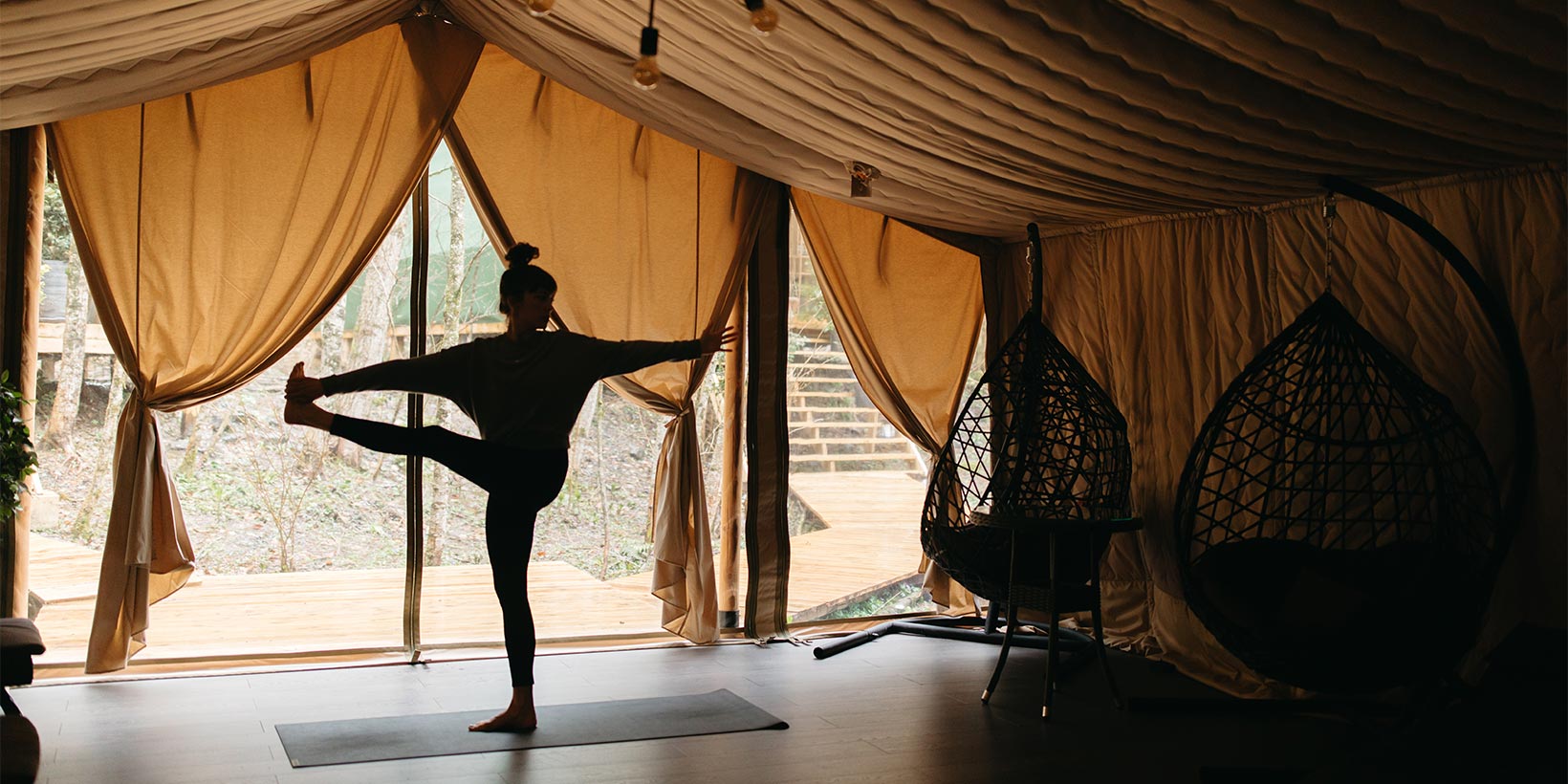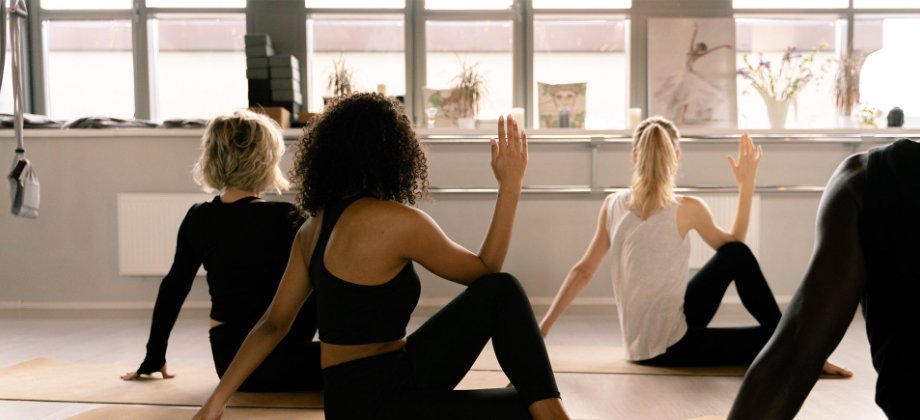
Patanjali’s Asana: Incorporating Yoga Philosophy
We recently started delving into one of the foundational texts of the yogic philosophy and tradition, Patanjali’s Yoga Sutras – a collection of aphorisms on the practice of yoga. We focused on the Eight Limbs of Yoga – the path towards self realization and enlightenment – and got to discuss the first two limbs; the 5 yamas (ethical guidelines) and the 5 niyamas (inner observances). And we saw how we can draw inspiration from them and let them guide us through our practice and the practice we share with our students.
Today, we’ll be moving on to the third limb; asana – the part of yoga we are probably most familiar with. The truth is that what most people in our western world have in mind when they think of yoga could be more accurately described as an asana practice. But, in fact, according to Patanjali’s Yoga Sutras and his Eight-Limb Path of Yoga, asana is just one of the steps in the journey.
Patanjali is thought to be “the father of yoga” and the Yoga Sutras are considered the fundamental text on the practice of yoga. And with asana being just one part of this practice, one can easily understand that this text is not a 101 guide to mastering certain postures.
There are, however, 3 sutras – 3 short and concise phrases in Sanskrit that offer us all we need to know about asana. Let’s break them down and see how they can inspire us to create meaningful yoga classes that will make the difference.
Every time we step onto our mats and practice sthira and sukha, we are one step closer to bringing these qualities of stillness and ease in our everyday lives
Sthira Sukham Asanam (sutra 2.46)
Let’s start with taking a closer look at the first asana-related sutra, and probably one of the most well-known sutras. The term sthira translates as firmness, steadiness and strength. In terms of etymology, it arises from the root word stha, which means “to stand” or “to be firm”.
The literal translation for sukha is “good space,” coming from the Sanskrit words su (good) and kha (space). It refers to happiness, ease, comfort, pleasure or bliss.
As for the last word, asana, it has its roots in the word as, which suggests “the act of sitting down, abiding, being present”. The term asana traditionally refers to the seated meditation posture. At the same time, it is found as a suffix in the name of several yoga postures and it is commonly used to refer to all postures, the physical aspect of yoga in general.
As suggested in sutra 2.46, the third limb of yoga, asana, has 2 essential characteristics. It should be steady, stable, and motionless, and at the same time, it should be comfortable or filled with ease. An asana that is not steady and comfortable is more like some kind of physical exercise.
Adopting these steady and comfortable qualities can completely transform both our personal practice and our students’ practice. And there are quite a few ways to bring them up during class. When in a seated posture, ask your students to take some time in order to make sure they are comfortable. Suggest them to maybe sit on a cushion. Ask them to smoothly strengthen their spine, lightly engage their core muscles, open their heart and keep the neck soft. Tell them to gently close their eyes, relax their faces and softly bring their attention to their breath. In every asana you teach, encourage them to choose the variation that feels better and stay with their breath. Let them know that their own breath will make the asana steadier and more comfortable.
Prayatna Shaithilya Ananta Samapattibhyam (sutra 2.47)
In the next sutra, Patanjali explains how one can perfect the steady and comfortable asana. Prayatna shaithilya ananta samapattibhyam translates as “the means of perfecting the posture is that of relaxing or loosening effort, and allowing attention to merge with endlessness, or the infinite”. So Patanjali here introduces the concept of an effortless attitude together with a focus on the infinite.
This effortless attitude is clearly not something we are used to. In our lives we’ve learned that we constantly need to try to do this or that. So, we keep struggling to make things happen. But Patanjali says that perfecting asana comes not so much by doing, but by not doing. Of course, training the body to sit still and aligned requires some effort at first. As soon as this is accomplished, though, what remains is to learn to do nothing and just allow the asana to settle in – to consciously cease effort.
One way to encourage your students to do so is by helping them move their attention through the different parts of their body and reminding them to breathe smoothly. Ask them to let go of any unnecessary tension as they exhale. And repeat.
And if focusing on the infinite sounds like a lot, just keep it simple. Encourage your students to softly close their eyes and allow their attention to rest on their breath, the way their belly button moves as they inhale and exhale, or the sensation in their nostrils area. Their object of attention will slowly become the whole of infinity.

Tatah Dvandva Anabhighata (sutra 2.48)
Tatah translates as then, meaning after achieving steadiness and ease in the posture. Dvandva refers to the pairs of opposites, the dualities. The term anabhighata describes the freedom from suffering. So, in the third asana-related sutra, Patanjali suggests that from the attainment of the perfected posture, there arises the unimpeded freedom from suffering due to dualities (such as good and bad or pleasure and pain).
We could say that due to the dual nature of our mind, we keep chasing after pleasure and trying to avoid pain. This sutra implies that by accomplishing stillness and comfort, all disturbances cease to exist. And this sense of integration and balance gradually becomes our reality off the mat too.
Final Thoughts
Patanjali’s Eight Limbs of Yoga and his perception of asana, as part of the path towards self-realization, offers us great inspiration on how we perceive our practice and what we share with our students. Every time we step onto our mats and practice sthira and sukha, we are one step closer to bringing these qualities of stillness and ease in our everyday lives, in our roles as friends, partners, employees or parents. Both us and our students. Isn't the mere thought that each time this happens, we are one step closer to bliss, encouraging if nothing else? You can read the next part of this series here!






